“Heritage Barns of Indiana” is a painting project started in 2004 by Gwen Gutwein. “My focus was on historic barns throughout Indiana and capturing as many on canvas as possible, on location,” she said.
We asked Gutwein to tell us about her inspiring and meaningful project, including her guidelines for painting historic barns and her advice for other plein air artists.
Enjoy the following exclusive Q&A about what drove her to commit to – and continue pursuing – this endeavor.
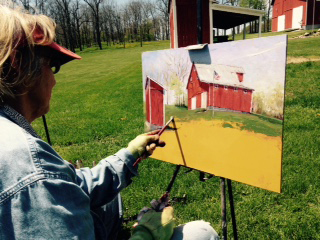
Cherie Dawn Haas: How did this project begin for you? What was your initial inspiration?
Gwen Gutwein: In the beginning, in 2004, I formulated a project that would allow me to use and hone my artistic abilities in oil painting, highlight a concern about the demise facing our rural barns and heritage, and contribute to society.
Maybe part of this inspiration to focus on old barns was from a tragic event that occurred during my childhood. I grew up on a farm in northwest Indiana and spent countless hours over many years playing in our beloved barn. One spring night, when I was about twelve years old, the barn was completely destroyed by fire. The event remains a distinct memory that could have been the impetus onto this painting path.
To get started on my barn project, I set up a few guidelines.
I decided to do a painting of two historic barns from each of Indiana’s 92 counties. Doing so would help me capture the diversity, integrity, and heritage reflected throughout the state. I also thought including a little history and/or barn story of each barn, would enrich each painting and the whole project.
I researched each county before traveling and used the Indiana Atlas and Gazetteer to guide me around. This set of maps includes every dirt road and every small creek in the state.
Completing as many paintings as possible on location was important too. I felt the character of each barn, the delicate nuances of color in the light and in the shadow shapes, was best captured after spending time with each subject. In essence, capturing the barn’s portrait.
Respect for each barn owner was very important. I did not approach a barn without first getting permission from the barn’s owner. I was careful not to leave behind any remnants of my plein air session.
I also wanted to give back to my state using my talents. In 2009, the Fort Wayne Museum of Art sponsored tours of the first paintings completed. The exhibits included the paintings and each barn’s history/story. That set of tours traveled the region from 2009 through 2013. Other tours lasted through 2016. I was awarded the Indiana Bicentennial recognition in 2016. The Bicentennial emblem is included on the back of each painting. 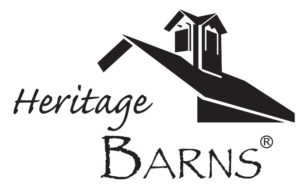
In addition, I developed a trademark to designate the paintings included in my project. The logo is placed on the back of each painting.
Later, I expanded historic barn painting to include historic barns from several other states. I followed the same guidelines set out for my Indiana barn painting. These paintings are also under the umbrella of my Heritage Barns trademark and each painting has a trademark logo on the back.
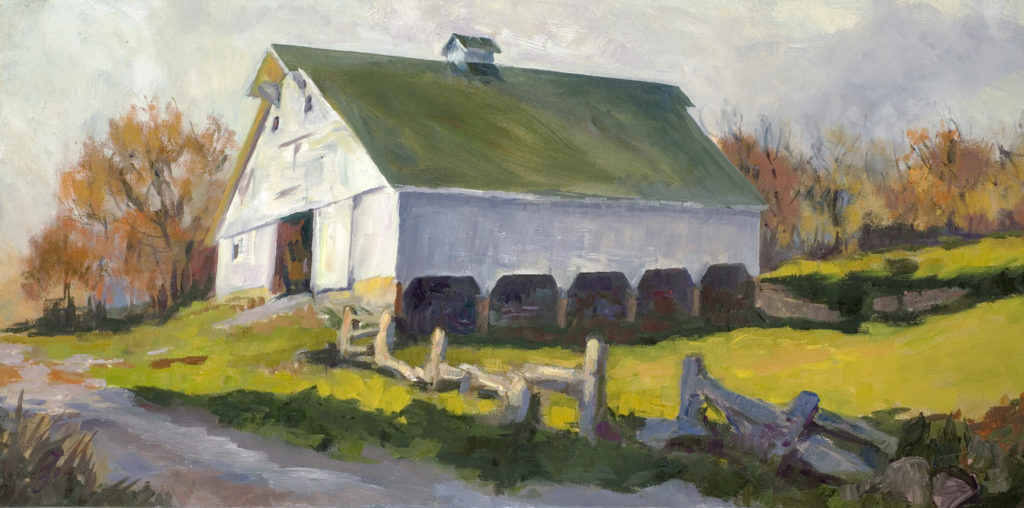
CDH: What are some of the challenges you faced during this project?
GG: I discovered several challenges as I moved through this project.
Time was a major issue. I had a full time job, so arranging my schedule to allow the time needed to travel and paint, took some creativity. Since time was such an important aspect, I did research before my painting trip so that every available segment of time was spent locating and painting each barn.
Finding the “right” barn often meant driving the county roads even after preliminary research into the chosen county. I discovered the curvy roads along waterways were the best place to look, possibly because they were the older roads leading to older farms.
Finding and reaching out to the barn owners was sometimes a challenge, but the efforts were worth it. I met so many fascinating and wonderful barn owners. They were overjoyed that I wanted to include their barn in my painting project. They often went out of their way to provide fascinating stories and histories around their barns. Many have become lifelong friends.
Weather and location were a consideration. Even with a good weather forecast, sometimes my painting trip or paint session was cut short, or completely foiled.
A few barns I wanted to paint were located in precarious places. Including them required a different approach. I completed small sketches, took notes and then photographed these barns. Later, I painted them in my studio.
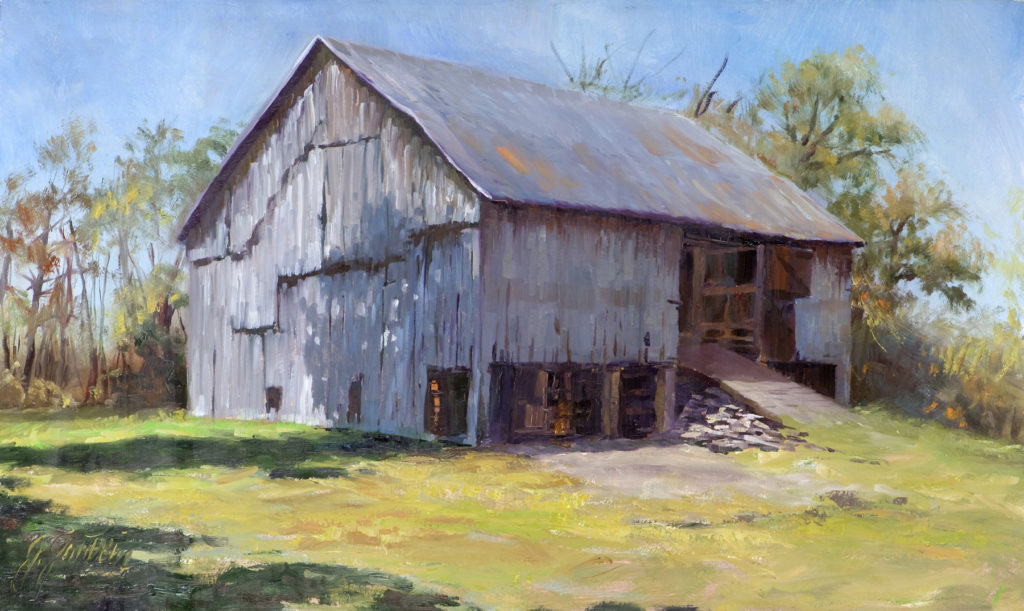
CDH: Do you have any funny stories from the sessions?
GG: Painting on location during this 12-year project has led to a journal full of funny stories, especially with animals.
Pastures surround many barns and often hold grazers. During one painting session, while I was set up in a pasture, the resident and friendly Black Angus cattle decided to keep me company. They encircled me while they grazed. Over the hours of quietly working, the cattle couldn’t control their curiosity. They slowly moved closer and closer until they were sniffing my palette, the painting, and me. They even pulled on the tie that held my apron in place, which was a big surprise! My quick response startled them, but they didn’t stay back for long. They became enthusiastic and vocal critics, close and personal! It was so much fun!
During another session, twin fawns tiptoed closer and closer while sniffing the air. Then there was a skunk encounter. Thankfully that ended much better than expected. Birds often landed at my feet, totally ignoring me. And, of course, dogs, friendly horses, nosey goats, and purring kittens added joy and stories to my adventures. I have many memories and most were entered into my barn-painting journal after each trip.
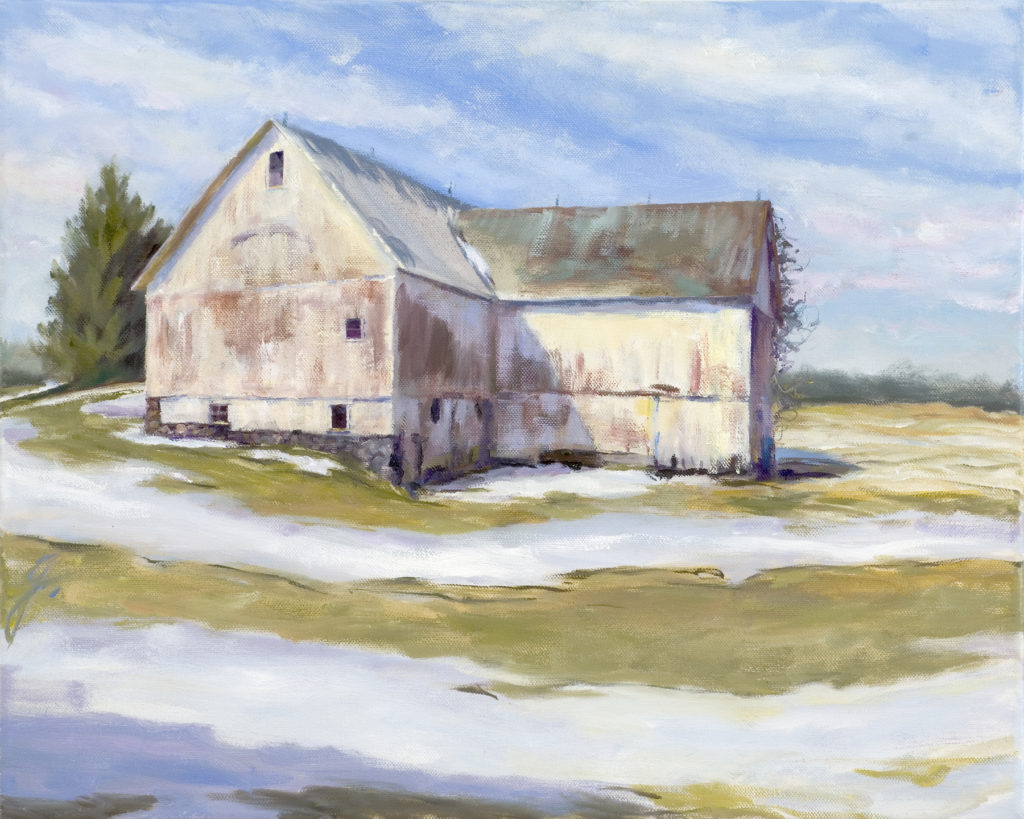
CDH: What advice do you have for artists who are new to painting barns and/or painting outdoors?
GG: I recommend all artists try plein air painting. Even if they feel it is not how they want to express themselves. Plein air painting enhances studio painting, much more than I ever thought possible.
Spending time on location studying one’s subject matter opens a whole new way of seeing and feeling. The key is spending time. It is so exciting when all of a sudden the reflected light shows a hidden subtle hue not before seen.
It’s an exciting surprise when the unusual colors in the shadow shapes show their glory, only possible after a segment of time. Character is slowly revealed when the whole scene is taken in.
Once this was experienced, I discovered my reference photographs carried a different set of criteria. I recognized the camera’s limitations and learned how to compensate for the loss of value and hue inherent in my photos. My studio paintings became richer and stronger because of my plein air experience.
Don’t be afraid to venture out and paint. I always spoke with respect to barn owners about their barn and farm. I always asked permission to paint. I never assumed it would be okay to trespass into their field for a better perspective. Asking them for permission broke all kinds of ice; they were overjoyed to allow me to paint. Use your good judgment when placing your easel and supplies and avoid setting up along busy roads.
Develop a checklist. There is nothing worse than getting on location and discovering your brushes are in the studio. I have a checklist that I will share with anyone.
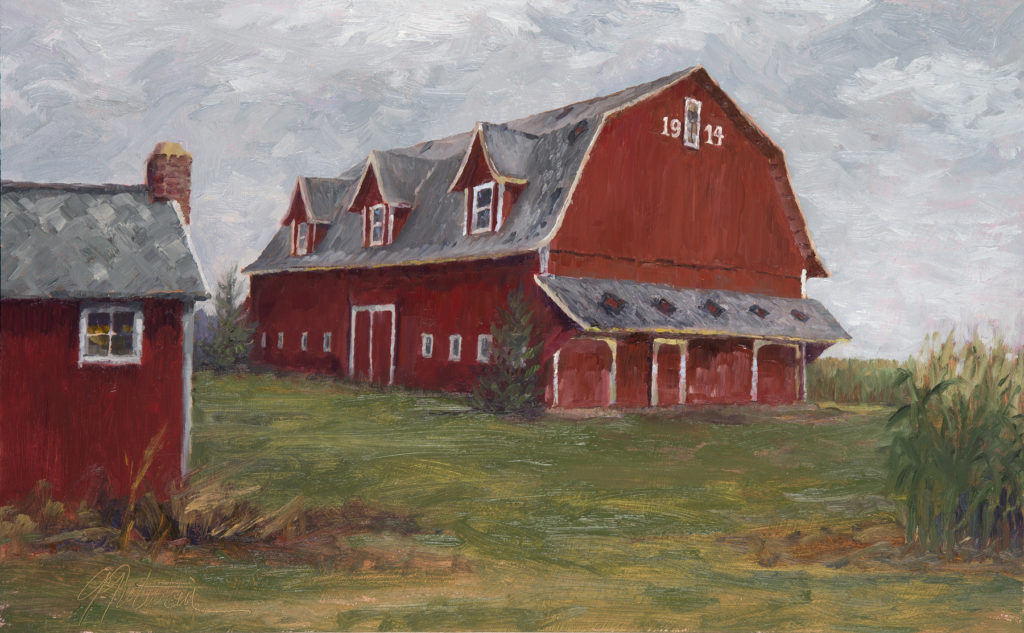
CDH: What do you wish you had known when you first began painting outdoors?
GG: I started plein air painting not knowing anything about it. Over time I learned what I would need for a better experience. Beyond my checklist to confirm I had my paint supplies, I added jugs of water, boots, extra clothes, hats, gloves, sun block, and repellent. For windy days, I added weights for my easel and a clamp to hold my palette in place. It may seem like a lot of supplies but once rounded up, it’s an easy addition for a successful adventure.
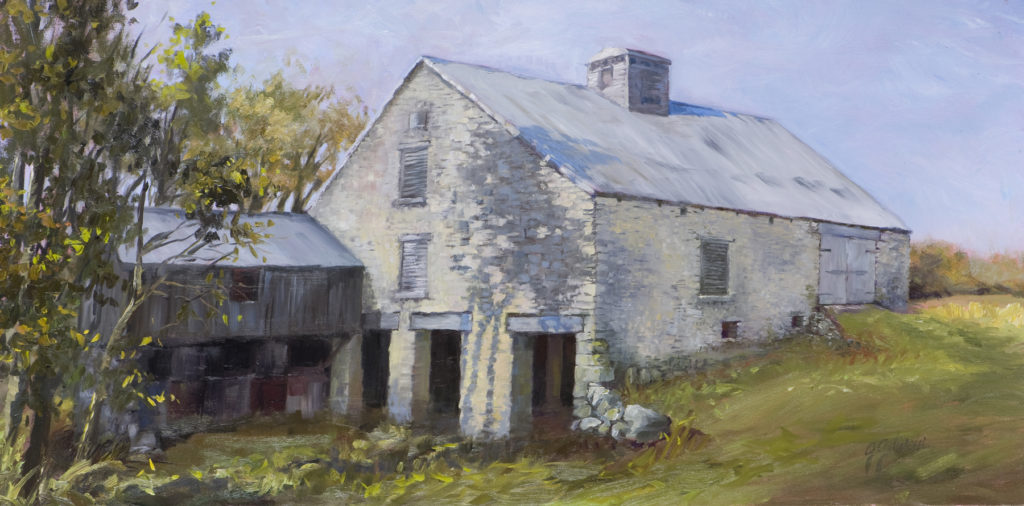
CDH: Anything else you’d like to add?
GG: As a final comment, I believe my project was successful. My painting skills have greatly improved and I have had a positive influence on other plein air painters.
I have a beautiful hardbound book of all 186 historic barn paintings, published in the fall of 2020. The book, Heritage Barns, also includes detail photos of old latches or hinges from the old barns and of course, the barn’s unique and captivating story. I included some painting notes with each barn story. I also have a small booklet of historic barn paintings from other states. This booklet includes added photos and barn stories.
My project also helped spark a statewide interest in historic barns and in their preservation. Indiana now has an active historic barn foundation.
I had a fantastic adventure, and best of all, I met some of the greatest people in Indiana and beyond.
The last painting in this project was completed in 2016.
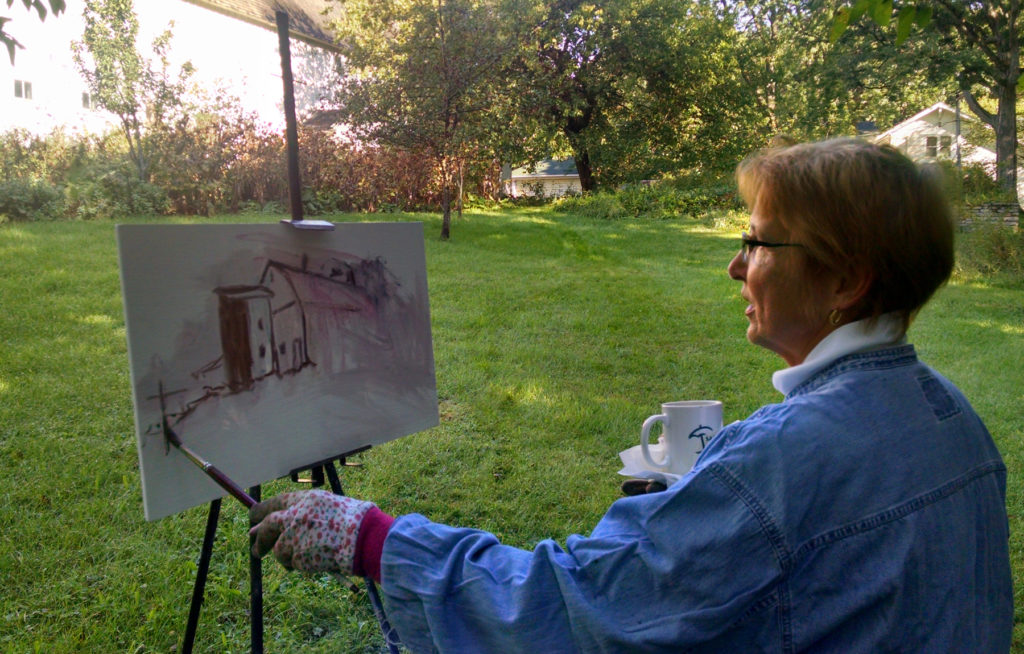
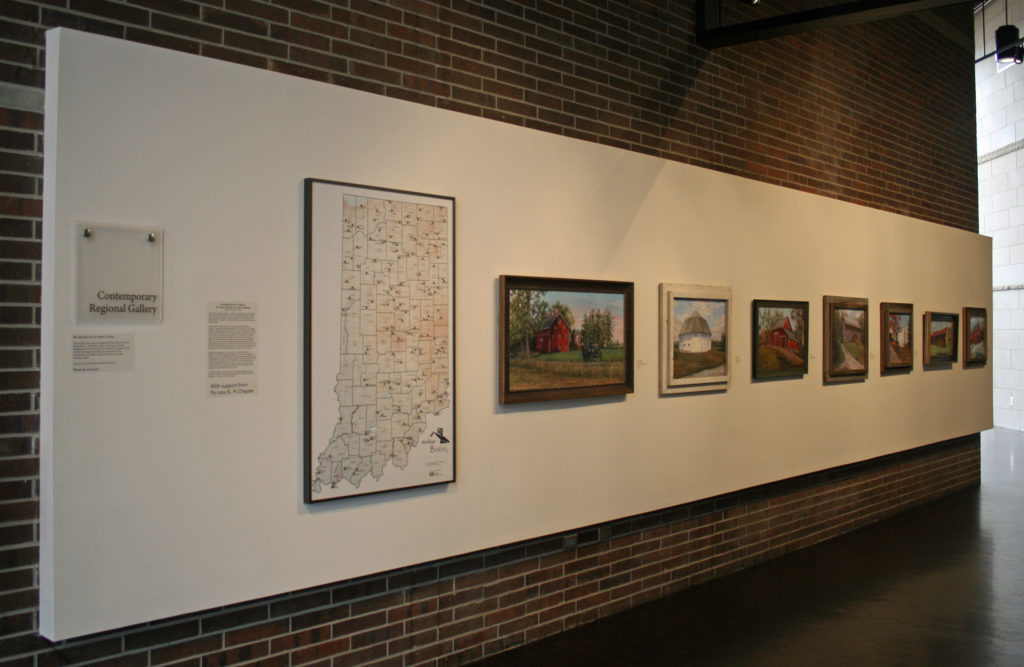
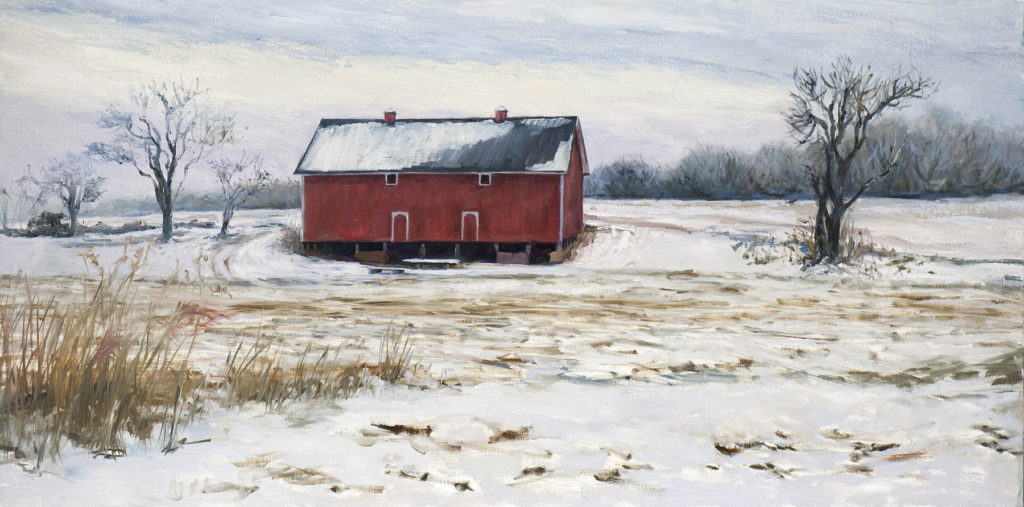
To view all of Gutwein’s Heritage Barns, visit her website: www.gwengutwein.com.
> Click here to subscribe to the free newsletter, Plein Air Today
> And click here to subscribe to PleinAir Magazine so you never miss an issue!
> Looking ahead, join us in January 2021 for Watercolor Live!

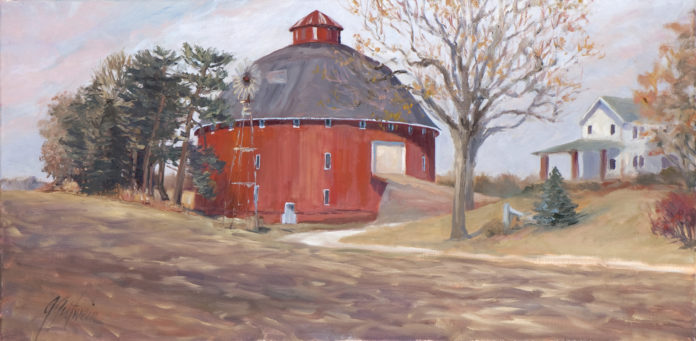
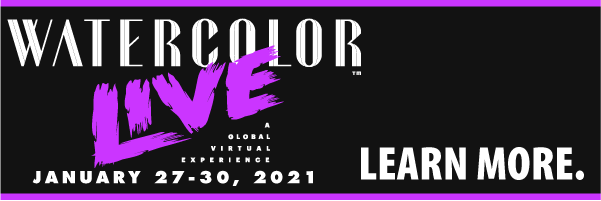

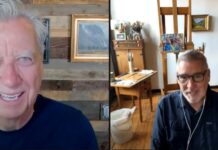
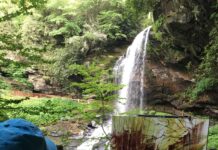
What a great idea. Thank you for this article. It takes me back home and provides some much needed inspiration to get out and paint. Can’t wait to buy the book.